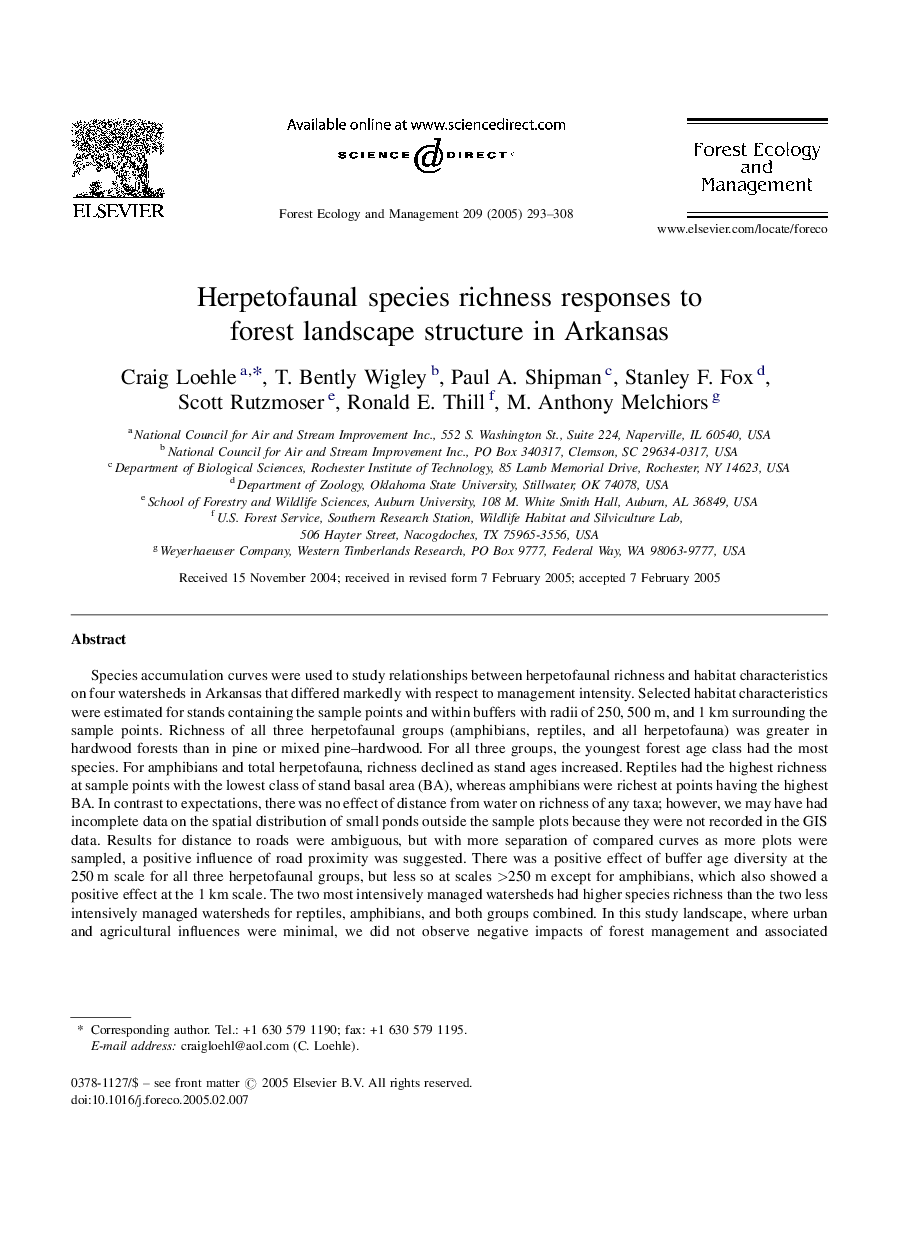| کد مقاله | کد نشریه | سال انتشار | مقاله انگلیسی | نسخه تمام متن |
|---|---|---|---|---|
| 10250892 | 159455 | 2005 | 16 صفحه PDF | دانلود رایگان |
عنوان انگلیسی مقاله ISI
Herpetofaunal species richness responses to forest landscape structure in Arkansas
دانلود مقاله + سفارش ترجمه
دانلود مقاله ISI انگلیسی
رایگان برای ایرانیان
کلمات کلیدی
موضوعات مرتبط
علوم زیستی و بیوفناوری
علوم کشاورزی و بیولوژیک
بوم شناسی، تکامل، رفتار و سامانه شناسی
پیش نمایش صفحه اول مقاله

چکیده انگلیسی
Species accumulation curves were used to study relationships between herpetofaunal richness and habitat characteristics on four watersheds in Arkansas that differed markedly with respect to management intensity. Selected habitat characteristics were estimated for stands containing the sample points and within buffers with radii of 250, 500Â m, and 1Â km surrounding the sample points. Richness of all three herpetofaunal groups (amphibians, reptiles, and all herpetofauna) was greater in hardwood forests than in pine or mixed pine-hardwood. For all three groups, the youngest forest age class had the most species. For amphibians and total herpetofauna, richness declined as stand ages increased. Reptiles had the highest richness at sample points with the lowest class of stand basal area (BA), whereas amphibians were richest at points having the highest BA. In contrast to expectations, there was no effect of distance from water on richness of any taxa; however, we may have had incomplete data on the spatial distribution of small ponds outside the sample plots because they were not recorded in the GIS data. Results for distance to roads were ambiguous, but with more separation of compared curves as more plots were sampled, a positive influence of road proximity was suggested. There was a positive effect of buffer age diversity at the 250Â m scale for all three herpetofaunal groups, but less so at scales >250Â m except for amphibians, which also showed a positive effect at the 1Â km scale. The two most intensively managed watersheds had higher species richness than the two less intensively managed watersheds for reptiles, amphibians, and both groups combined. In this study landscape, where urban and agricultural influences were minimal, we did not observe negative impacts of forest management and associated activities, and local habitat heterogeneity created by silviculture often had a positive effect on herpetofaunal species richness.
ناشر
Database: Elsevier - ScienceDirect (ساینس دایرکت)
Journal: Forest Ecology and Management - Volume 209, Issue 3, 2 May 2005, Pages 293-308
Journal: Forest Ecology and Management - Volume 209, Issue 3, 2 May 2005, Pages 293-308
نویسندگان
Craig Loehle, T. Bently Wigley, Paul A. Shipman, Stanley F. Fox, Scott Rutzmoser, Ronald E. Thill, M. Anthony Melchiors,